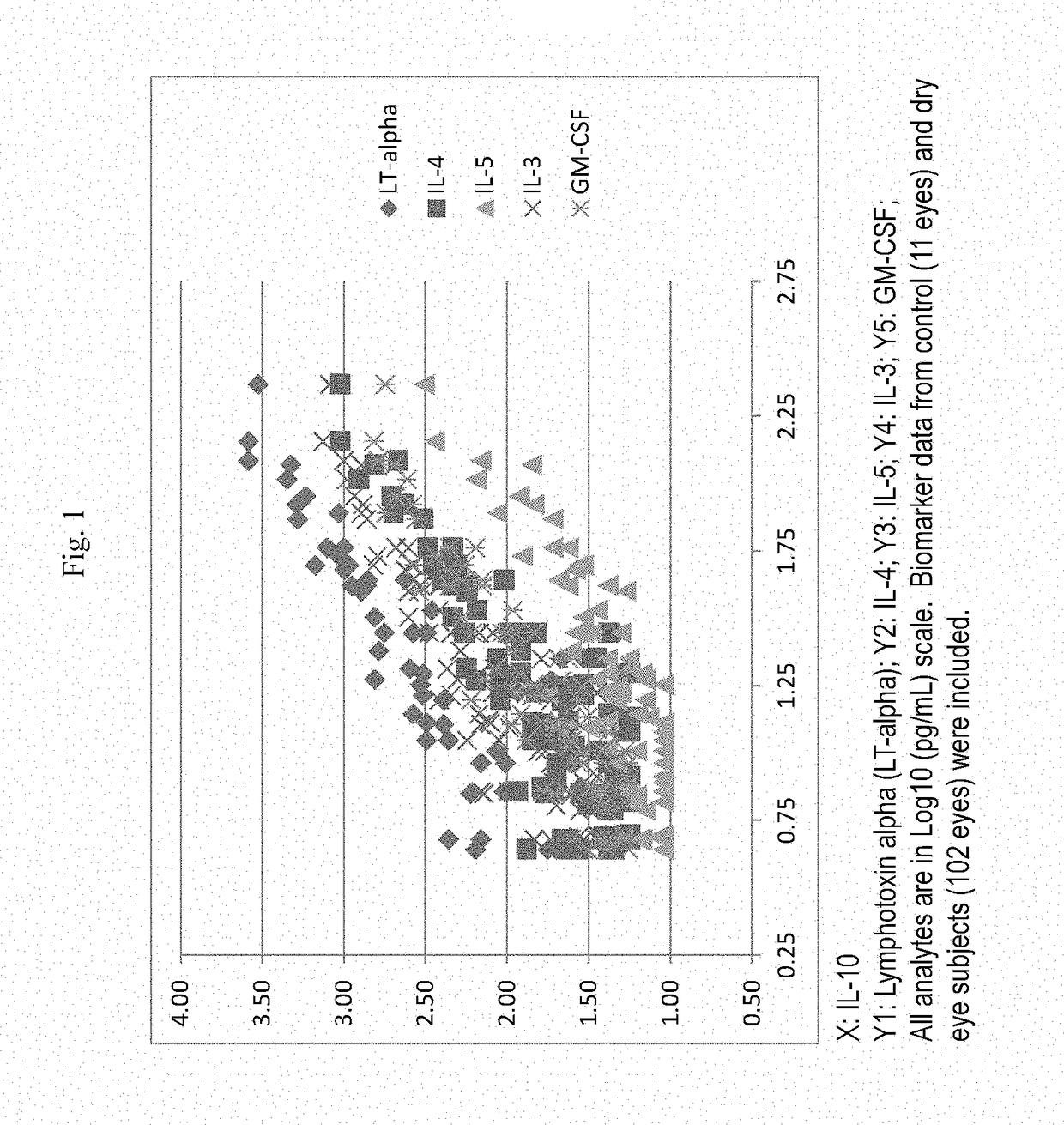Therapeutic compositions for the treatment of dry eye and related ocular surface diseases
a technology for ocular surface diseases and compositions, applied in the field of ophthalmology, can solve the problems of significant affecting the quality of life and work-related activities, eyelid hygiene, difficulty in reading, driving, etc., and achieve the effects of suppressing immunopathology, promoting treg development and expansion, and maintaining immune toleran
- Summary
- Abstract
- Description
- Claims
- Application Information
AI Technical Summary
Benefits of technology
Problems solved by technology
Method used
Image
Examples
example 1
1. Study Objectives
[0158]To evaluate that topical administration of ophthalmic recombinant human IL-33 (rhIL-33) improves symptoms and signs in dry eye patients.[0159]To identify an appropriate dose for topical administration of ophthalmic rhIL-33 in dry eye patients.
2. Background and Rationale
[0160]IL-33, through binding to IL-33 receptor on ILC2 cells, stimulates and induces production of type 2 cytokines, including IL-4, IL-5, IL-9, and IL-13, thus promoting tissue repair, wound healing, and resolving inflammation. IL-33 has also been shown to promote Treg expansion and function.
3. Study Design
[0161]This is a Phase 2, prospective, randomized, double-masked, placebo-control, parallel group, multicenter study in patients with DED. Patients are randomized equally to the following six treatment arms (70 patients per arm) of ophthalmic formulation of recombinant human IL-33 of 1.0 mcg / mL, 4 mcg / mL, 12 mcg / mL, or 25 mcg / mL, twice daily (BID), and placebo control (BID). This study is co...
example 2
1. Study Objectives
[0183]To evaluate that topical administration of ophthalmic recombinant human LT-α3 (rhLT-α3) improves symptoms and signs in dry eye patients.[0184]To identify an appropriate dose for topical administration of ophthalmic rhLT-α3in dry eye patients.
2. Background and Rationale
[0185]It is thought that soluble LT-α3 produced by RORγt(+) ILC cells is involved in regulating CD4+ T cell, in particular Treg and naïve T cells, homing and homeostasis in the mucosa. RORγt(+) ILC cells, through production of LT-α3, are critical for protection against intestinal pathogens, for maintenance of the epithelial barrier, and for the prevention of systemic dissemination of commensal microbiota.
3. Study Design
[0186]This will be a Phase 2, prospective, randomized, double-masked, placebo-control, parallel group, multicenter study in patients with DED. Patients will be randomized equally to the following six treatment arms (70 patients per arm) of ophthalmic formulation of LT-α3 of 1.0mc...
PUM
| Property | Measurement | Unit |
|---|---|---|
| concentrations | aaaaa | aaaaa |
| tear break up time | aaaaa | aaaaa |
| osmolality | aaaaa | aaaaa |
Abstract
Description
Claims
Application Information
 Login to View More
Login to View More - R&D
- Intellectual Property
- Life Sciences
- Materials
- Tech Scout
- Unparalleled Data Quality
- Higher Quality Content
- 60% Fewer Hallucinations
Browse by: Latest US Patents, China's latest patents, Technical Efficacy Thesaurus, Application Domain, Technology Topic, Popular Technical Reports.
© 2025 PatSnap. All rights reserved.Legal|Privacy policy|Modern Slavery Act Transparency Statement|Sitemap|About US| Contact US: help@patsnap.com

